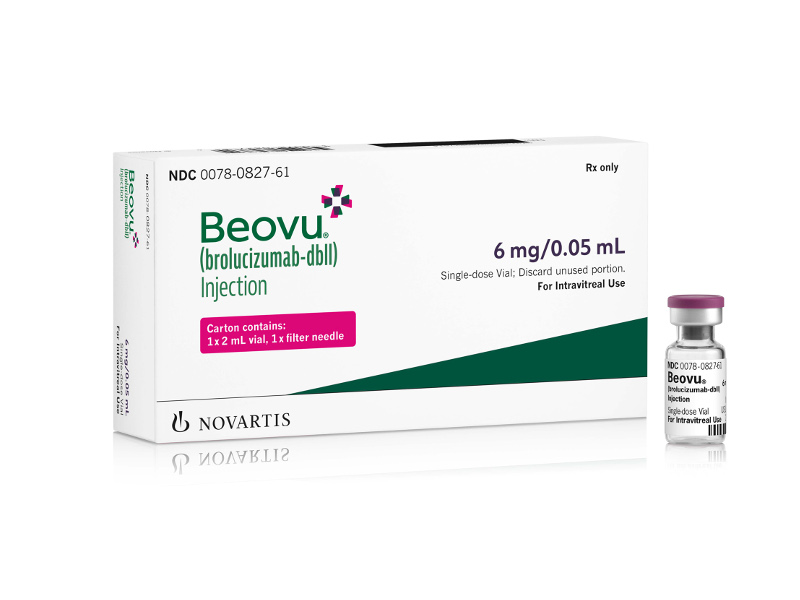 |
Inflammatory eye conditions are a rare occurrence in patients on brolucizumab, but the risk is still there. Photo: Novartis. Click image to enlarge. |
The safety profile of brolucizumab (Beovu) has been a topic of much discussion since soon after its initial FDA approval in 2019 for the treatment of neovascular age-related macular degeneration (nAMD). Postmarketing reports of adverse events such as retinal vasculitis (RV) and retinal occlusive vasculitis (RO) triggered an investigation by Novartis and an external safety committee, which concluded that patients receiving brolucizumab injections may be at increased risk for RV and/or RO, usually accompanied by intraocular inflammation (IOI). A research team decided to further examine these findings by looking at two large databases of patients who received brolucizumab injections, which revealed the incidence rate of IOI and/or RO to be about 2.4%.
Study participants were gathered from the Intelligent Research in Sight (IRIS) Registry and the Komodo Healthcare Map, totaling 10,654 and 11,161 eyes, respectively. Included eyes had diagnosed nAMD, received at least one brolucizumab injection and had up to six months of follow-up. Most eyes (91% from IRIS and 94% from Komodo) had switched from a different type of anti-VEGF to brolucizumab (the prior therapy most commonly being aflibercept [74% from IRIS and 68% from Komodo]). The findings were published in JAMA Ophthalmology.
The incidence rate of IOI and/or RO was equivalent for both databases (2.4% of eyes), as was the incidence of RV and/or RO (0.6%). The researchers identified the following two risk factors among patients who developed IOI and/or RO: a history of IOI and/or RO occurring within the previous year and female gender (although the latter was found to be much less significant).
“Patients with a history of IOI and/or RO in the 12 months before brolucizumab initiation had an increased observed risk rate (8.7% IRIS and 10.6% Komodo) for an IOI and/or RO event in the six months following the first brolucizumab treatment compared with patients without prior IOI and/or RO (2% in both datasets),” the researchers wrote in their study. “There was an increased estimated incidence rate in women (2.9% and 3%) compared with men (1.3% and 1.4%), but this risk was not as large as that of a prior IOI and/or RO. Similar findings were observed for patients with RV and/or RO events.”
These findings don’t necessarily come as a shock, the researchers suggest, since recurrence of ocular inflammation is not an unfamiliar phenomenon. They drew a comparison to the uveitis population, which faces a heightened risk for future inflammatory events.
Due to limitations of this retrospective study, such as lack of access to patient medical records and imaging, the observed predictors of IOI and/or RO events are not indefinite, and brolucizumab therapy cannot be tied directly to these inflammatory events in patients with nAMD. More controlled studies will help better determine causality.
Khanani AM, Zarbin MA, Barakat MR, et al. Safety outcomes of brolucizumab in neovascular age-related macular degeneration: results from the IRIS registry and Komodo Healthcare Map. JAMA Ophthalmol. November 24, 2021. [Epub ahead of print]. |

